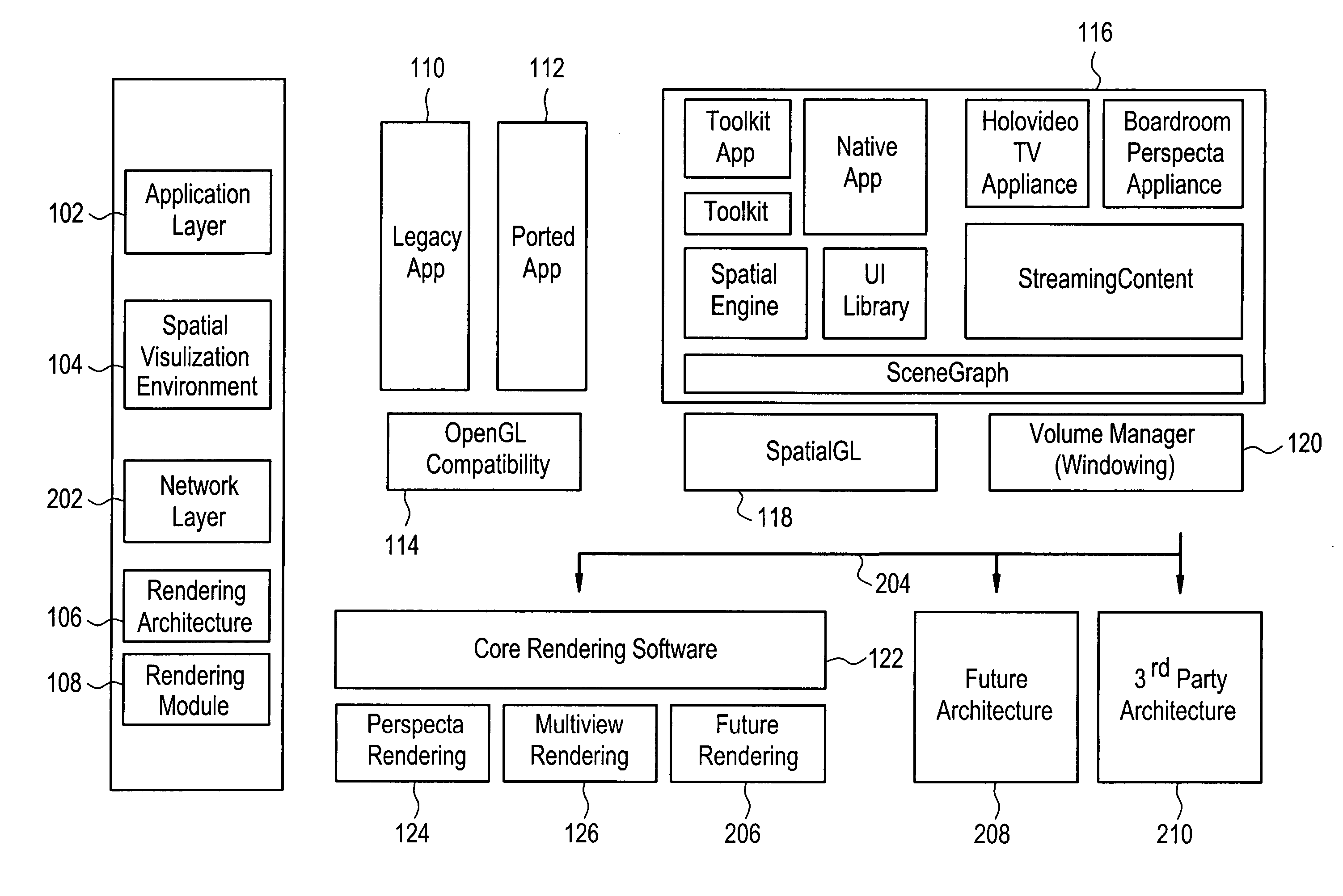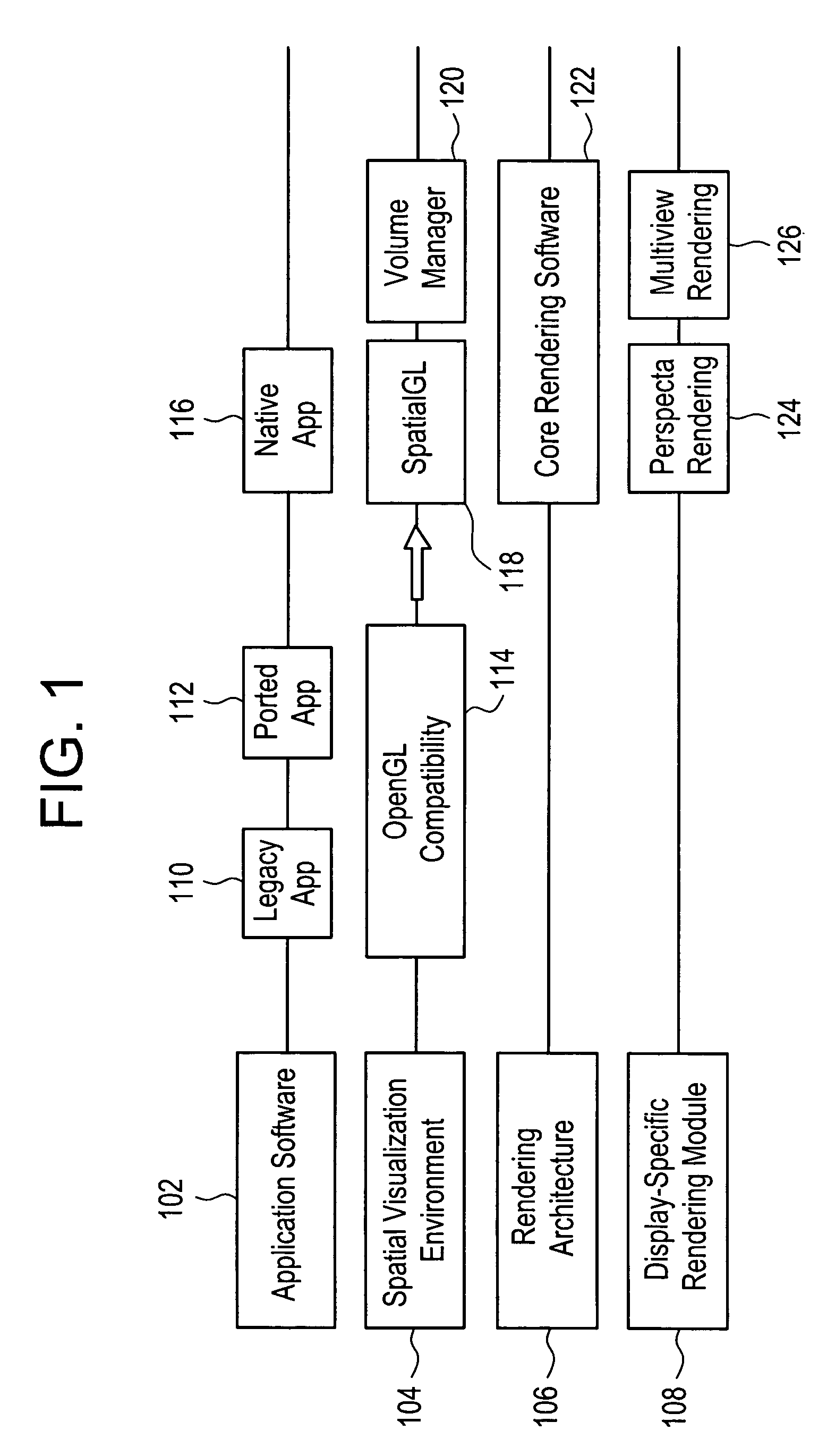Architecture for rendering graphics on output devices
a graphics and output device technology, applied in the field of visualization, can solve problems such as application vendors taking a risk when they modify their software for these displays, and the process separation is generally more complicated
- Summary
- Abstract
- Description
- Claims
- Application Information
AI Technical Summary
Benefits of technology
Problems solved by technology
Method used
Image
Examples
Embodiment Construction
[0022]Exemplary embodiments of the present invention include a spatial 3-D architecture with a real-time compatibility layer to allow legacy applications to support a broad range of 3-D display devices through an application and display-agnostic dataflow design. The architecture also has a spatial visualization environment (SVE), that includes a 3-D rendering API and a display virtualization layer that enables application developers to universally exploit the unique benefits (such as true volumetric rendering) of 3-D displays. SVE supports the cooperative execution of multiple software applications. As part of the SVE, a new API is defined, referred to herein as the spatial graphics language (SpatialGL), to provide an optional, display-agnostic interface for 3-D rendering. SpatialGL is a graphical language that facilitates access to remote displays and graphical data (e.g., rendering modules and assets). The architecture further has core rendering software which includes a collectio...
PUM
 Login to View More
Login to View More Abstract
Description
Claims
Application Information
 Login to View More
Login to View More - R&D
- Intellectual Property
- Life Sciences
- Materials
- Tech Scout
- Unparalleled Data Quality
- Higher Quality Content
- 60% Fewer Hallucinations
Browse by: Latest US Patents, China's latest patents, Technical Efficacy Thesaurus, Application Domain, Technology Topic, Popular Technical Reports.
© 2025 PatSnap. All rights reserved.Legal|Privacy policy|Modern Slavery Act Transparency Statement|Sitemap|About US| Contact US: help@patsnap.com



